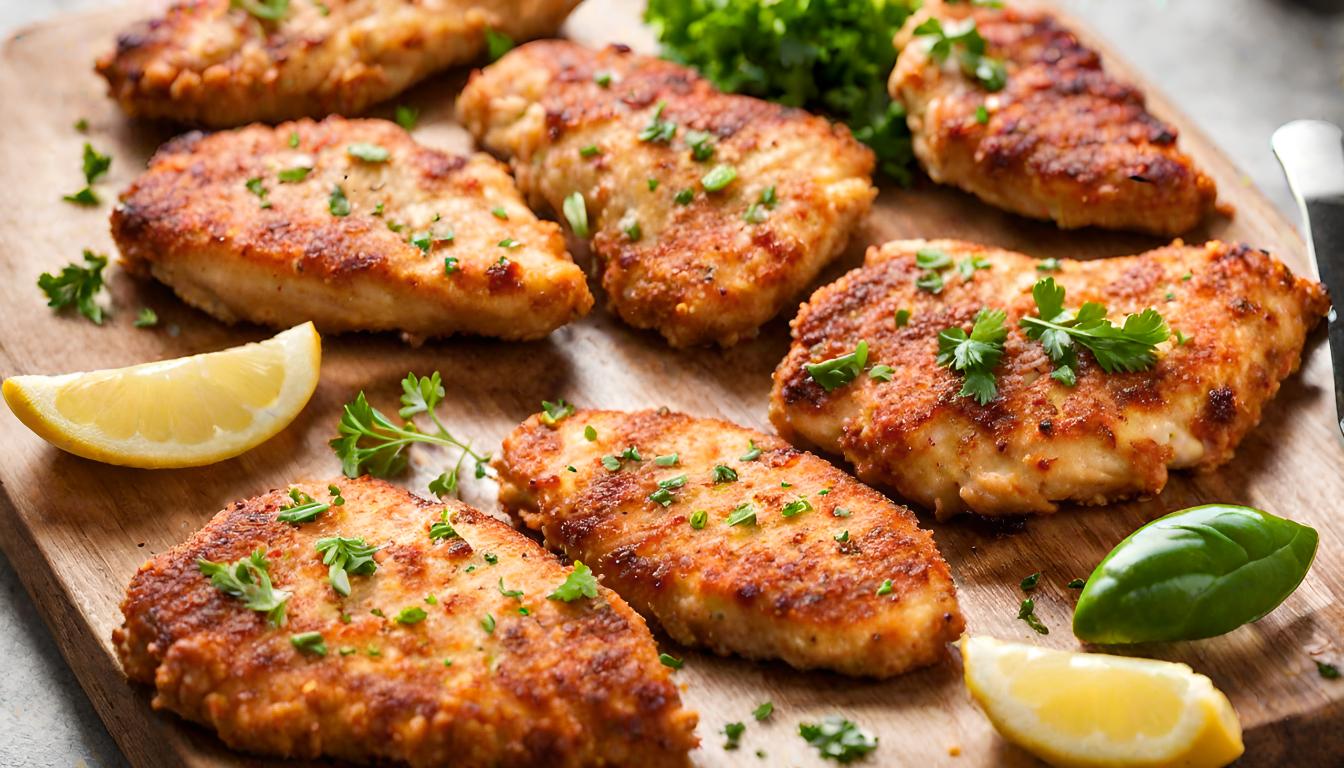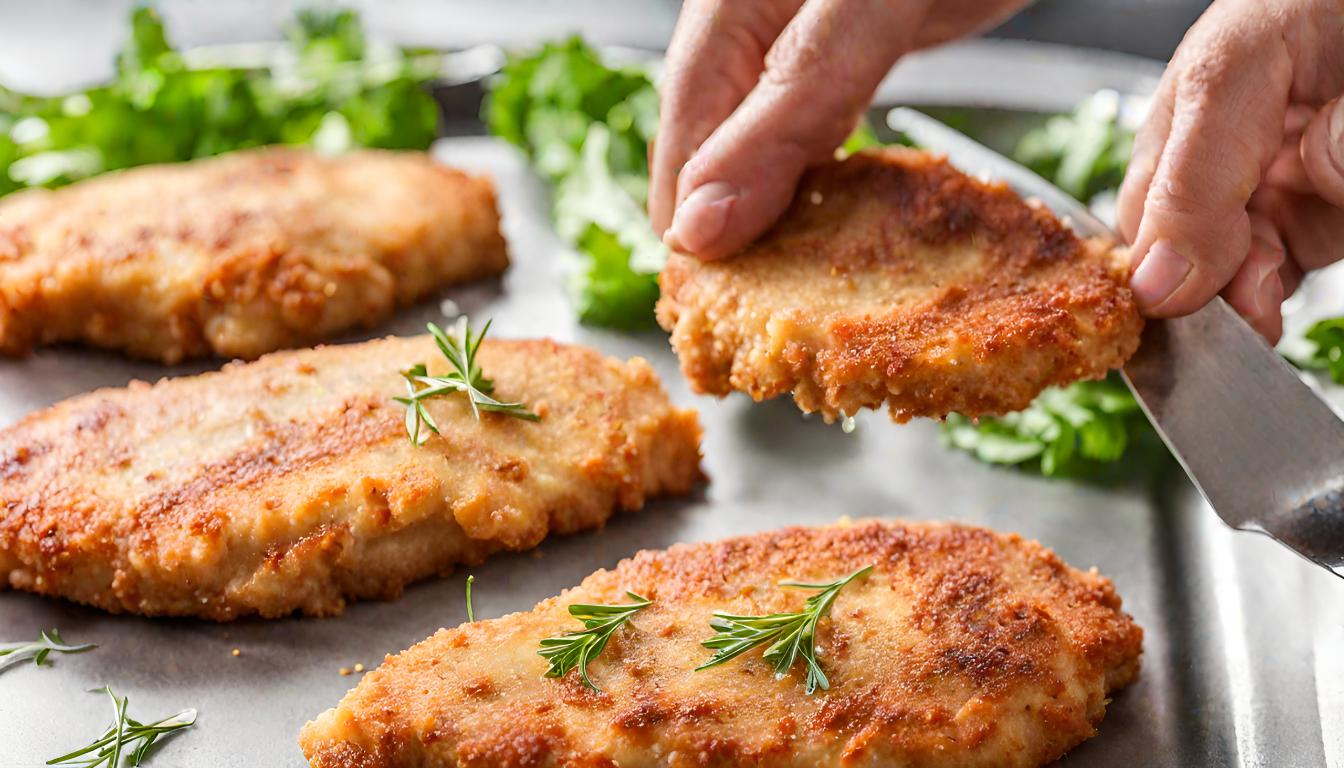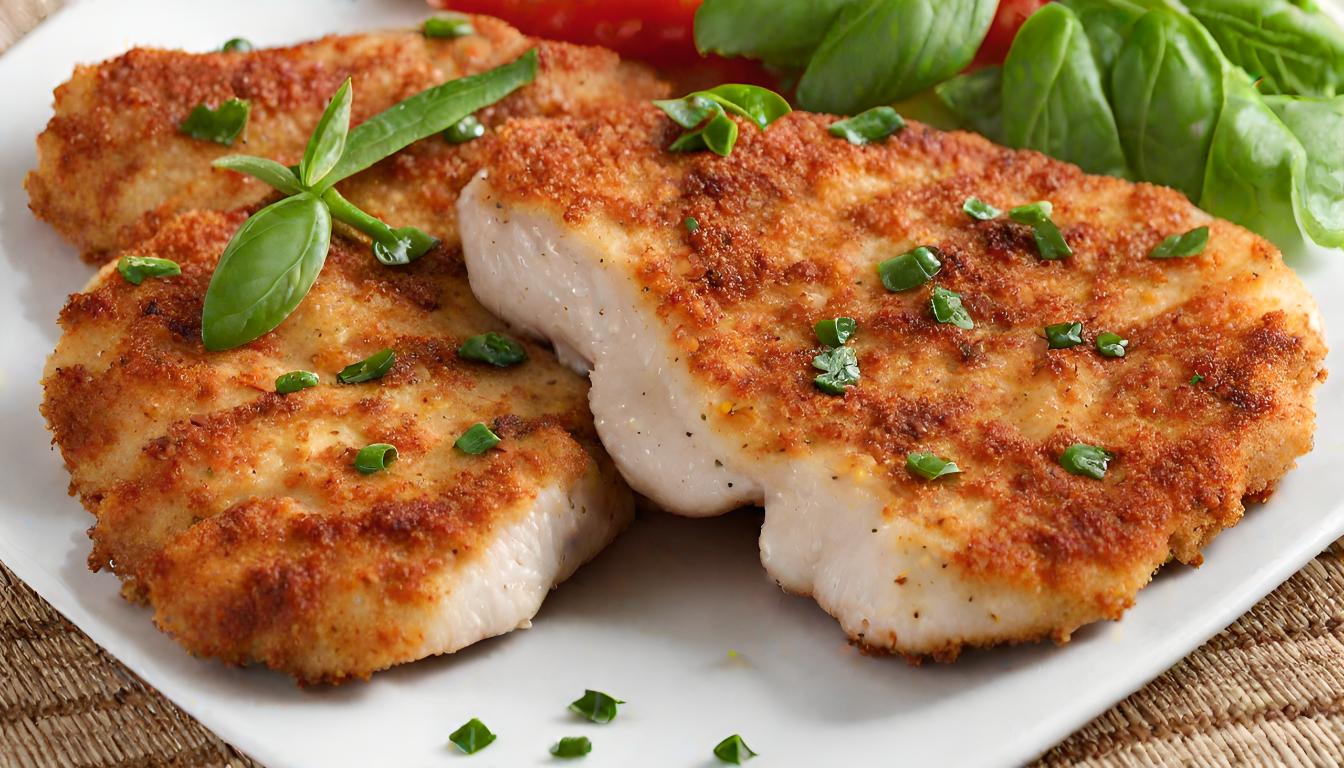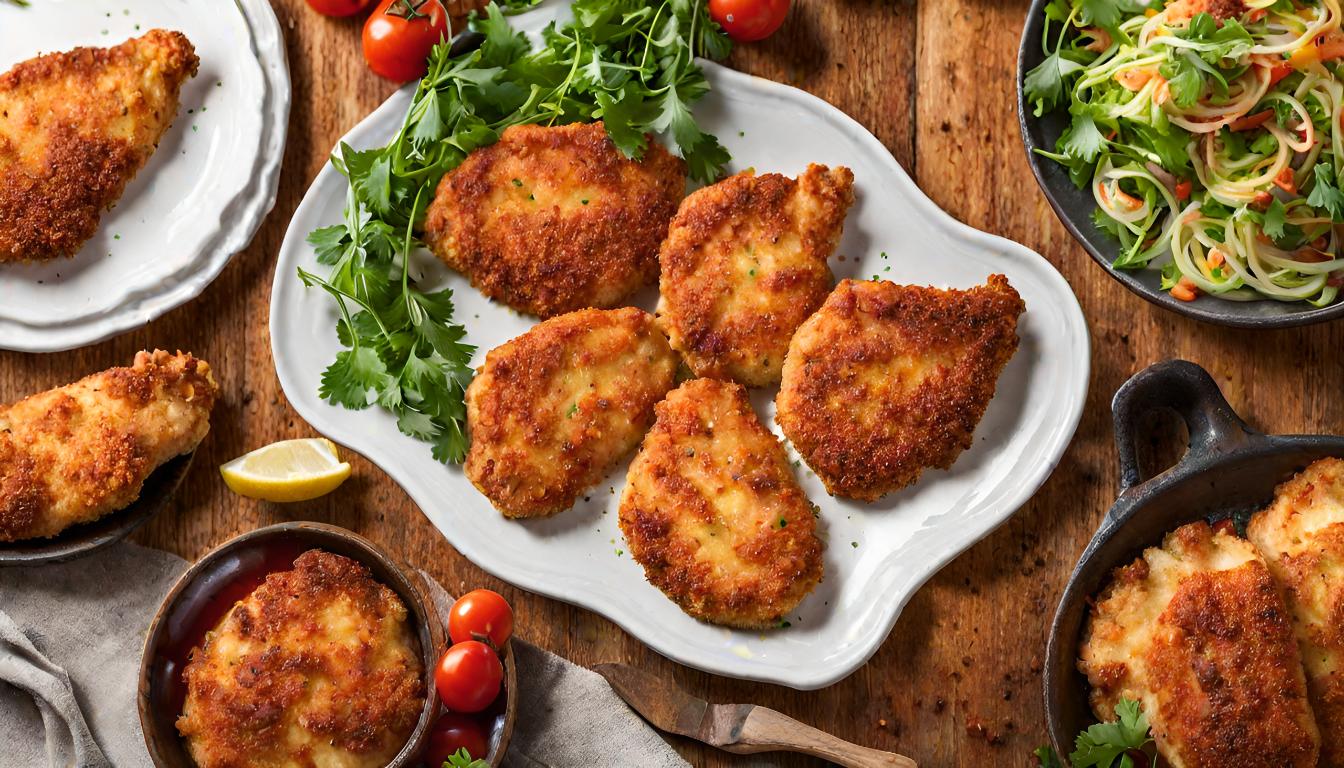The Essential Guide to Chicken Cutlets
Discovering the Versatility of Chicken Cutlets
Chicken cutlets have become a staple in kitchens around the globe, known for their versatility and ease of cooking. A chicken cutlets is essentially a thin slice of chicken breast that has been tenderized and often breaded before cooking. Its popularity stems from the quick cooking time and the plethora of recipes it can be adapted to. From the classic breaded and fried cutlet to more health-conscious grilled versions, chicken cutlets offer something for every palate.
The Culinary Significance of Breaded Chicken Cutlets
The versatility of chicken cutlets in recipes cannot be overstated. They serve as a blank canvas, absorbing flavors from marinades and seasonings, making them a favorite among home cooks and professional chefs alike. Moreover, chicken cutlets have a universal appeal, with variations found in cuisines across the world. From the Italian Cotoletta alla Milanese to the Japanese Chicken Katsu, each culture has its unique take on this beloved dish, showcasing the global love affair with chicken cutlets.
Stay tuned as we dive into the preparation of chicken cutlets in the next section, exploring how to select the right type of chicken and prepare it for cooking.
Preparing the Chicken

Mastering the Preparation of Chicken Cutlets
Selecting the Ideal Chicken for Cutlets
Choosing the right type of chicken is crucial for making perfect chicken cutlets. The best cutlets are made from the breast portion of the chicken due to its lean meat and uniform thickness, which allows for even cooking. When selecting chicken, opt for fresh over frozen when possible, as fresh chicken tends to retain less water, resulting in a better texture after cooking. However, if frozen chicken is your only option, ensure it’s thoroughly defrosted and patted dry before proceeding with your recipe.
Essential Preparation Techniques for Perfect Cutlets
The preparation of chicken cutlets involves a few key steps to ensure they cook evenly and absorb maximum flavor. First, cleaning and trimming the chicken breasts are essential to remove any fat or sinew. Next, flattening or tenderizing the chicken is a critical step. This can be achieved by placing the chicken between two pieces of plastic wrap and gently pounding it with a meat mallet until it reaches an even thickness of about 1/2 inch. This not only helps in tenderizing the meat but also reduces cooking time, ensuring your cutlets are juicy and tender.
In the next part of our guide, we’ll delve into the ingredients and substitutions that can be made to cater to various dietary needs, ensuring everyone can enjoy these delicious chicken cutlets.
Crafting the Perfect Chicken Cutlets: Ingredients and Substitutions

Core Ingredients for Classic Chicken Cutlets
Creating the perfect chicken cutlet requires a balance of simple yet effective ingredients. At its core, the recipe calls for:
- Chicken breasts: The star of the show, providing a lean and tender base.
- Flour: For dusting, it helps in adhering the egg wash and breading.
- Eggs: Beaten eggs create a sticky base for the breadcrumbs to cling to.
- Breadcrumbs: They offer the cutlet its signature crispy exterior. Panko breadcrumbs are a popular choice for extra crunchiness.
- Seasonings: Salt, pepper, and any additional spices or herbs to infuse the cutlets with flavors.
Adapting Recipes to Meet Dietary Needs
For those with dietary restrictions or preferences, fear not; substitutions are plentiful:
- Gluten-Free: Replace traditional flour and breadcrumbs with gluten-free alternatives. Almond flour and crushed gluten-free cereal or breadcrumbs work wonderfully.
- Dairy-Free: If your recipe calls for Parmesan in the breading, nutritional yeast is a fantastic dairy-free alternative that adds a similar cheesy flavor.
- Vegan Options: For a vegan chicken cutlet, use thick slices of tofu or seitan as the base. Chickpea flour mixed with water can substitute for eggs, and vegan breadcrumbs are readily available for coating.
Tailoring Cutlets for Every Diet
The beauty of chicken cutlets lies in their adaptability. Here are more detailed substitutions:
- For a Low-Carb Diet: Swap out flour and breadcrumbs for crushed pork rinds or parmesan cheese mixed with almond flour for a delicious, low-carb crust.
- Egg-Free: A mixture of milk (dairy or plant-based) with a tablespoon of vinegar can act as a binding agent for the breading, replacing the need for eggs.
In the next section, we’ll guide you through a step-by-step cooking process, ensuring your chicken cutlets turn out perfectly crispy on the outside and juicy on the inside, every time.
The Ultimate Chicken Cutlets Cooking Guide
Marinating the Chicken for Flavor and Tenderness
Marinating the chicken is a pivotal step to infuse it with flavors and tenderize the meat, making the cutlets juicier. You can use a simple marinade of olive oil, lemon juice, garlic, and herbs for at least 30 minutes or overnight in the refrigerator. For those who like a bit of spice, adding paprika or chili flakes can kick up the heat.
Achieving the Perfect Breading and Coating
The secret to the perfect chicken cutlet lies in its breading and coating. Here’s how to achieve that golden, crispy exterior:
- Flour Dredging: Start by lightly coating each marinated chicken piece in flour. This helps the egg wash stick to the chicken.
- Egg Wash: Dip the floured chicken into beaten eggs mixed with a bit of water or milk. This step is crucial for the breadcrumbs to adhere properly.
- Breadcrumb Coating: Finally, coat the chicken evenly in breadcrumbs. For an extra crispy texture, press the breadcrumbs onto the chicken to ensure they stick well.
For a healthier version, you can use whole wheat breadcrumbs or even a mixture of almond meal and grated Parmesan for those following a low-carb diet.
Cooking Methods
Chicken cutlets can be cooked in various ways, each method offering a different texture and flavor profile:
- Pan-Frying: Heat a generous amount of oil in a skillet over medium-high heat. Cook the breaded chicken for about 3-4 minutes on each side until golden brown and cooked through. This method yields a crispy exterior with a tender inside.
- Baking: For a lighter option, bake the breaded cutlets in a preheated oven at 400°F (200°C) for 20-25 minutes, flipping halfway through. Baking reduces the oil content while still achieving a crispy crust.
- Air Frying: Air frying is another healthier alternative. Cook the cutlets at 400°F (200°C) for about 10 minutes, flipping halfway through. This method uses minimal oil, making the cutlets crispy and light.
Tips for Achieving the Perfect Crust
- Ensure the oil is hot before adding the chicken to achieve a crispy, golden crust without absorbing too much oil.
- Do not overcrowd the pan when frying, as this can lower the oil’s temperature, resulting in soggy cutlets.
In the next part, we’ll explore serving suggestions and presentation tips to elevate your chicken cutlets from a simple meal to a delightful dining experience.
Serving and Presentation

Serving and Presenting Chicken Cutlets Like a Pro
Creative Serving Suggestions for Every Occasion
Once your chicken cutlets are cooked to perfection, it’s time to think about how to serve them. These versatile cutlets pair beautifully with a wide range of sides, making them suitable for any meal:
- For a Classic Meal: Serve alongside mashed potatoes and steamed green beans for a comforting, traditional dinner.
- Light and Healthy: Opt for a crisp green salad dressed with vinaigrette or a side of roasted vegetables for a lighter option.
- Italian-Inspired: Accompany with spaghetti tossed in marinara sauce or a fresh Caprese salad to bring a touch of Italy to your table.
- Kid-Friendly: Cutlets can be sliced into strips and served with dipping sauces like honey mustard or ketchup, making them a hit with the younger crowd.
Elevating Your Dish with Thoughtful Presentation
The way you present your chicken cutlets can transform them from a simple weeknight meal to a dining experience. Here are some tips to make your dish visually appealing:
- Garnish Wisely: A sprinkle of chopped fresh herbs such as parsley or basil adds color and freshness. A wedge of lemon on the side not only looks appealing but also offers a zesty flavor boost when squeezed over the cutlets.
- Plate with Purpose: Use a bed of your chosen side dish as a base for the cutlets. This not only looks attractive but also ensures that every bite includes a harmonious blend of flavors.
- Sauce Creatively: If using a sauce, drizzle it artistically around the plate or over the cutlets. A balsamic glaze or a light cream sauce can add both flavor and visual interest.
Remember, the key to a beautiful presentation is simplicity and balance. Let the golden, crispy chicken cutlets be the star of the show, complemented by the sides and garnishes without overcrowding the plate.
In the next section, we’ll address some frequently asked questions (FAQs) about preparing chicken cutlets, offering expert advice to ensure your culinary success.
Chicken Cutlets FAQs: Expert Answers to Common Questions
Ensuring Moist and Juicy Chicken Cutlets
How to Keep Chicken Cutlets Moist?
The secret to moist chicken cutlets lies in both preparation and cooking. Marinating the chicken not only infuses it with flavor but also adds moisture. When frying, make sure the oil is sufficiently hot to quickly seal the juices inside. For baking or air frying, vigilantly monitor the internal temperature to reach 165°F (74°C) without surpassing it, ensuring the cutlets remain juicy.
Meal Prep and Advance Cooking
Can Chicken Cutlets Be Made Ahead of Time?
Absolutely, chicken cutlets are perfect for meal prep. You can either bread them and refrigerate up to a day in advance or fully cook and then store them. For reheating, the oven or stovetop offers the best results, reviving the cutlets’ texture and warmth.
Choosing the Right Oil for Frying
Best Oils for Frying Chicken Cutlets?
The best oils for frying chicken cutlets have a high smoke point and neutral flavor. Canola, vegetable, and peanut oil are excellent choices. Olive oil, especially extra virgin, is not recommended for high-heat frying due to its lower smoke point and strong flavor. For a healthier option, consider air frying, which requires minimal oil yet still achieves a crispy texture.
Achieving Crispiness Without Frying
How to Achieve a Crispy Coating Without Frying?
For those seeking a healthier alternative to frying, baking or air frying can produce a crispy coating without the need for excessive oil. Ensure the breaded cutlets are placed on a wire rack over a baking sheet to allow hot air to circulate around them, crisping the coating evenly. Spraying a light coat of cooking spray on the breaded cutlets before baking or air frying can also help achieve a golden, crispy exterior.
Utilizing Different Cuts of Chicken
Can I Use Chicken Thighs Instead of Breasts for Cutlets?
Yes, chicken thighs can be a delicious alternative to breasts for making cutlets. They provide a richer flavor and increased moisture. When using thighs, ensure they’re boneless, skinless, and flattened to an even thickness to ensure uniform cooking.
Stay tuned as we delve into advanced tips and tricks in the next section, aimed at elevating your chicken cutlet dishes with innovative techniques and flavors.
Advanced Tips and Tricks
Ensuring Moisture and Flavor
To guarantee your chicken cutlets are both flavorful and moist, consider these expert tips:
- Brining: Soaking the chicken in a saltwater solution before cooking can enhance its moisture retention. Even a quick 30-minute brine can make a noticeable difference.
- Proper Marination: Utilize acidic components like lemon juice or vinegar in your marinade. These ingredients not only tenderize the chicken but also lock in moisture during the cooking process.
- Avoid Overcooking: Use a meat thermometer to ensure the chicken reaches the safe internal temperature of 165°F (74°C) without going over. Overcooked chicken loses its juiciness and becomes tough.
Creative Variations
Once you’ve mastered the classic chicken cutlet, why not experiment with some creative variations to keep your meals exciting?
- Global Flavors: Incorporate spices and herbs from different cuisines to give your cutlets an international twist. Try a Moroccan-inspired version with cumin, coriander, and a hint of cinnamon, or go for a Japanese-style cutlet with panko breadcrumbs and a side of tonkatsu sauce.
- Stuffing: Elevate your cutlets by adding a stuffing layer. Thinly spread seasoned ricotta or a mixture of spinach and feta on the chicken before rolling and breading. This adds a burst of flavor and moisture from the inside out.
- Sauces and Toppings: Experiment with various sauces and toppings post-cooking. A squeeze of fresh lemon juice, a sprinkle of fresh herbs, or a drizzle of homemade aioli can transform the dish.
By embracing these advanced techniques and variations, you can turn the humble chicken cutlet into a gourmet meal that impresses your family and guests alike. Remember, the key to culinary creativity is experimentation, so don’t be afraid to try new combinations and flavors.
In the concluding part of our guide, we’ll recap the journey we’ve taken through the world of chicken cutlets and offer some final thoughts to inspire your cooking adventures.
Conclusion
Recap and Final Thoughts
Throughout our extensive exploration of the world of chicken cutlets, we’ve delved into everything from selecting the ideal chicken to mastering serving and presentation tips.
At this stage, you should be brimming with confidence, armed with the knowledge not only to master the cooking of the perfect chicken cutlet but also to dive into experimenting with a myriad of flavors, techniques, and presentations. This exploration has the power to elevate a simple dish into an extraordinary culinary experience.
Truly, chicken cutlets provide a versatile platform for culinary creativity, offering you the opportunity to blend international flavors, cater to various dietary needs, and incorporate unique personal touches. Whether you’re putting together a quick meal on a busy weeknight or preparing a special feast for a momentous occasion, these adaptable cutlets can be customized to please any palate or comply with specific dietary restrictions.
Remember, the essence of great cooking lies in experimentation and passion. Don’t hesitate to try new variations, substitute ingredients based on what you have on hand, or invent entirely new recipes based on the foundational techniques discussed. The beauty of cooking is that there are always new discoveries to be made and flavors to be explored.
As you continue your culinary adventures with chicken cutlets, keep in mind that each attempt is an opportunity to refine your skills and develop your unique cooking style. Embrace the process, learn from each experience, and most importantly, enjoy the delicious results of your efforts.
Thank you for joining us on this detailed exploration of chicken cutlets. May your kitchen be filled with the aroma of cooking, the joy of experimentation, and the satisfaction of sharing wonderful meals with loved ones. Happy cooking!
